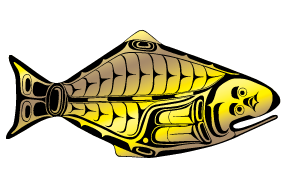Discard mortality rates (DMRs) are calculated from data that are collected by observers regarding the release viability or injury characteristics of Pacific halibut post-capture and are used to estimate the percentage of incidentally-caught fish that die after release. Currently, post-capture DMR estimates are based on qualitative assessments of the physical condition of the fish (e.g., minor/moderate/severe/dead for longline gear) and have a certain degree of uncertainty associated with them, which represents a source of uncertainty in the estimation of total mortality within current stock assessment models. In practice, assigned DMRs and their uncertainty translate into a priori adjustments to expected mortality in each upcoming year, and to the catch limits that are thereafter assigned to each harvest sector. Given current low halibut yields relative to long-term mean productivity, this potential to translate uncertainty into catch limit reductions can place undue hardship on some sector(s) relative to others. Therefore, there is an urgent need to improve our estimates of DMR as well as to provide strategies to improve survival of incidentally-caught Pacific halibut after release.
In order to address this important issue, the IPHC has been investigating the relationship between fish handling practices and fish physical and physiological condition and survival post-capture as assessed by tagging in order to better estimate post-release survival in Pacific halibut caught incidentally in the directed and bycatch longline fisheries. The rationale of these sudies is based on the notion that by understanding the relationship between handling practices, injury levels and physiological condition, on one hand, and between these and post-release survival, on the other hand, estimates of DMR could be improved. An important underlying topic in these studies is to better understand how a detailed assessment of physiological condition prior to release can improve our estimates of survival after release. This research aims to develop and introduce quantitative measurable factors that are linked to fish handling practices, physiological condition and ultimately survival in order to improve current DMR estimates. The specific objectives of these studies are (1) to investigate the effects of fish handling methods and associated injury level and physiological condition on post-release survival, and (2) to evaluate the effects of fish handling practices on injury levels and their association with the physiological condition of captured Pacific halibut. These studies were funded in part by a grant from the Saltonstall-Kennedy NOAA grant program.
The first component of this study involved the use of acceleration-logging pop-up archival transmitting tags to infer individual survival outcomes for Pacific Halibut that were released in situ following capture on longline gear. Postrelease behavioral data were evaluated for 75 Pacific halibut classified in Excellent viability that were at liberty for 2–96 days. Three fish were confidently inferred to have died after periods at liberty of 41–80 days, and another three fish may have died 96 days after release, resulting in minimum and maximum estimated 96-days postrelease DMRs of 4.2% (range = 0.0–8.7%) and 8.4% (range = 1.7–14.6%), respectively. The observed range in mortality estimates are consistent with the currently applied value of 3.5%. These results represent the first experimentally-derived estimates of discard mortality rate in the directed longline fishery (Loher et al., 2022).
The second component of this study investigated the relationships among hook release techniques (e.g., gentle shake, gangion cutting, and hook stripping), injury levels, stress levels and physiological condition of released fish, as well as the environmental conditions that the fish experienced during capture. Gentle shake and gangion cutting resulted in the same injury and viability outcomes with 75% of sublegal fish in Excellent viability, while the hook stripper produced the poorest outcomes (only 9% in Excellent viability). Hook stripping also resulted in more severe injuries, particularly with respect to tearing injuries, whereas gentle shake and gangion cutting predominantly resulted in a torn cheek, effectively the injury incurred by the hooking event. Physiological stress indicators (plasma levels of glucose, lactate, and cortisol) did not significant change with viability outcomes, except for higher lactate plasma levels in fish categorized as Dead. Hematocrit was significantly lower in fish that were categorized as Dead. Furthermore, 89% of fish classified as Dead were infiltrated by sand fleas, present in several sets in deeper and colder waters. Our results indicated that avoiding the use of hook strippers and minimizing soak times in areas known to have high sand flea activity result in better survival outcomes.
References
Loher, T., Dykstra, C.L., Hicks, A., Stewart, I.J., Wolf, N., Harris, B.P., Planas, J.V. (2022). Estimation of postrelease longline mortality in Pacific halibut using acceleration-logging tags. North American Journal of Fisheries Management. 42: 37-49. DOI: http://dx.doi.org/10.1002/nafm.10711

